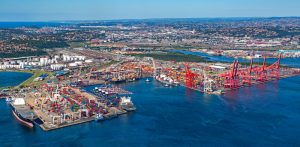 By Marko Grujicic, Analyst, Growth Analytics;
By Marko Grujicic, Analyst, Growth Analytics;
Joseph Lemoine, Analyst – Growth Analytics, Development Economics Vice Presidency; and
Greta Polo, Private Sector Development Analyst, World Bank
It might be assumed that public procurement is most heavily regulated in high-income countries, given that they have greater public sector capacity, more efficient institutions and longer traditions of regulation. This assumption is further supported by the fact that weaker institutions, informality and business activities outside of the scope of law are prevalent among low- and middle-income countries.
However, an analysis by the World Bank shows that this assumption is not true: high-income countries regulate public procurement less than low- and middle-income countries do.
When comparing levels of public procurement regulation across regions, OECD high-income economies place at around mid-point (see the graph below).
Levels of public procurement regulation in each region

Using data from Bosio, Djankov, Glaeser and Shleifer (2020), regulations are measured as they apply to four areas of public procurement: competition, transparency, integrity of contract and ease of exclusion. We take the equally-weighted average of all four components to calculate the total average and analyse this over seven global regions.
South Asia (55%), Europe and Central Asia (54%), and Sub-Saharan Africa (54%) are the regions that regulate public procurement the most (on average).
In contrast, East Asia and the Pacific (32%) is the least regulated region, followed by the Middle East and North Africa (42%).
A plausible reason for this difference is the assistance provided by development institutions to improve regulations in emerging economies. For example, in South Asia, the World Bank has supported seven out of eight countries with operational projects related to procurement and the improvement of its regulations, which may explain why regulations are so comprehensive in this region. By contrast, in East Asia and the Pacific, involvement to improve the regulatory framework has been sparse, with only a few countries, like Vietnam, receiving this support. Rather, more emphasis has been placed on capacity building, thus having a less direct influence on regulations.
Looking at specific regulations, the Sub-Saharan Africa region has the highest level of regulation in two areas: integrity of contract and competition.
Integrity of contract is regulated uniformly at a high level (50% or above) among almost all countries in the region, except for South Sudan. At 77%, it is also the most highly regulated globally and across the four areas of public procurement, 17% above the OECD high-income average.
The area of integrity of contract looks at restrictions on a procuring entity’s discretion during the life of a contract. This includes proper allocation of budget, regulation of sub-contracting and contract changes, maximum deadline to pay and interest on late payments. Most of these features are recommended by the OECD’s Methodology for Assessing Procurement Systems (MAPS), which has served as the framework for technical assistance in the region by numerous institutions, including the World Bank and African Development Bank.
Looking at Europe and Central Asia, procurement regulation reform, especially in former communist countries, is guided by two factors:
1. First, the overall drive towards structural improvement, as seen in the consistent improvement of these countries in the Doing Business study.
2. Second, a number of countries in the region, particularly in Central Asia, have benefitted from the advice of the Asian Development Bank and other multilateral institutions.
The Latin America and Caribbean region as well as the Middle East and North African regions present a different paradigm. These regions have a number of high- and upper middle-income countries, who pursue their own policy programmes. Reform in these countries – including in procurement regulations – is perhaps subject to the natural business cycle timetable, as documented in previous literature on the political economy of reform.
It is clear that regionally, increased procurement regulations are not owed to greater public sector capacity and overall stronger institutions. Rather, external factors, such as the involvement of large international organisations and regional banks, play a role in the development of a country’s procurement regulations as well as which aspects are regulated.


























